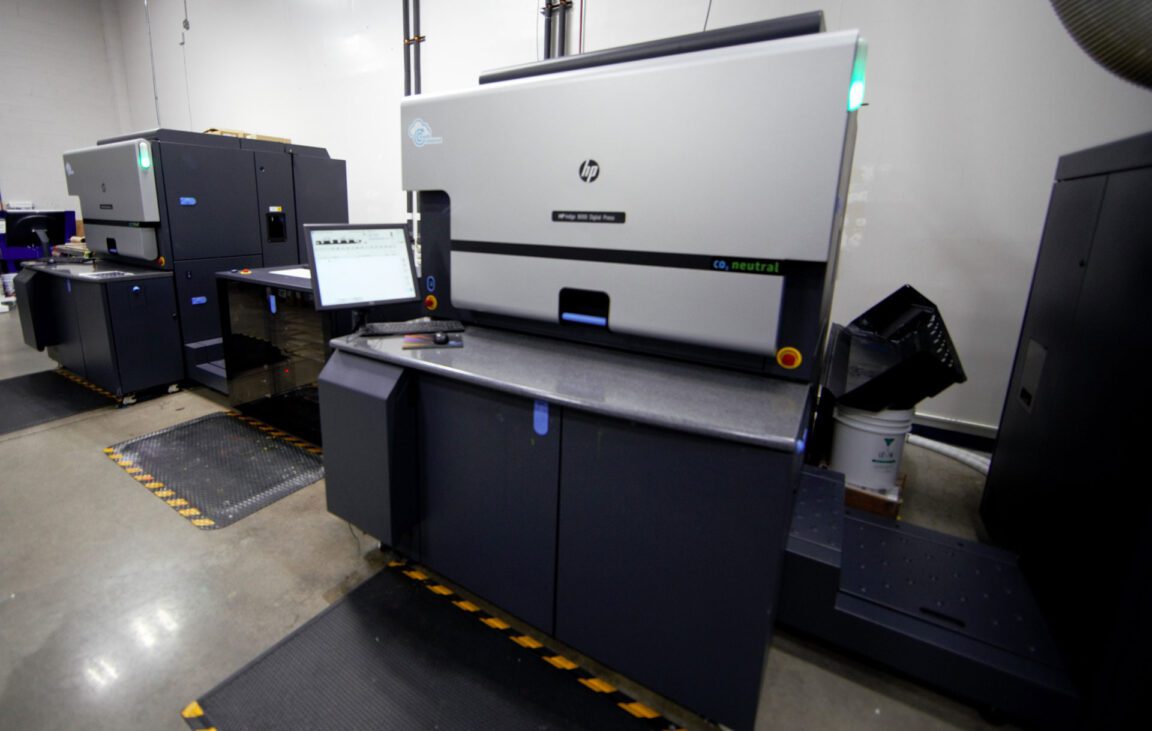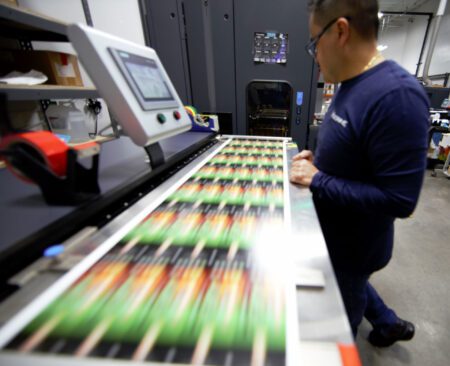While flexographic printing has been around since the 1800’s, the first digital printer was not introduced until the early 1990’s. The modem continued to gain steam and popularity in the early part of the Millennium, as digital started to integrate into the industry and even replace some conventional flexographic printers. It didn’t take long for discussion to ensue amongst both suppliers and customers: Which way is better?


Customers started to wonder, as many still do today, what were the benefits of the new methods of digital printing, and how did they compare to time-tested flexographic printing? In the beginning, as with any innovative technology, there was reluctance on the part of many regarding the new kid on the block, digital. Now, with decades of experience and innovation behind it, customers and vendors are sure it works. But still, the question remains for many – which medium is a better way to print?
Here at K. Sidrane, we print almost exclusively using our digital presses, and feel that that is the clear winner in terms of, most importantly, quality. We’re not the only ones who feel that way, as digital print is expected to grow from $6.3B in 2019 to $32.5B in 2029, according to Smithers Pira’s The Future of Digital Print: Long-Term Strategic Forecasts to 2029.


We started using flexographic printers in 1948 when the company first opened its doors, however as the technology in the digital world continued to advance, company CEO Neil Sidrane knew he couldn’t remain stuck in the past.
“When we first started with digital printing it was intended as a supplement to our flexo operations,” he says. “However, after only a few months working with the new technology, we realized that digital was a far superior print method to flexo. It not only reduced setup time and waste, but it enabled us to run shorter length jobs more cost-effectively. These benefits have allowed us to greatly expand our business.”
The Top Benefits of Printing Digital Include:
1. No Plate Fees
Many would say that the biggest win for digital printing right off the bat was the elimination of plates, and with that, costly plate fees generally passed on to customers. With digital printing, customers can change their art run-to-run without the burden of heavy fees.
2. Quicker Turnaround Time
Without having to rely on plates and the lengthy set up that comes along with their use, digital printing has greatly increased turnaround time in the print industry. This improves speed to market overall for the consumer, getting your products on the shelves faster than ever before.
3. Cost-Effective (both short and long run)
As for short runs, digital is the clear choice. Seasonal releases, limited editions, and testing out a new SKU all align perfectly with the benefits of digital. Even most flexographic printers will agree to that.
However many flexography enthusiasts still do praise the modem’s penchant for producing cost-effective and quick long runs. For a while, that may have been true—however, digital has an answer for that now with machines like HP’s Indigo 8000 press. A digital press with two identical print engines, running at twice the speed of one of its standard presses, this breakthrough makes it possible for digital printers to run through long runs very efficiently.
4. Ability to Gang Multiple SKUs
Combining all of the benefits listed above gives digital printers the ability to gang multiple SKUs together. With digital printing, and again, no plates needed, we can gang various flavors or versions of the same product family to run together to give the customer both a better price and quicker turnaround overall.
Want to learn more and get started? Reach out to Adam

